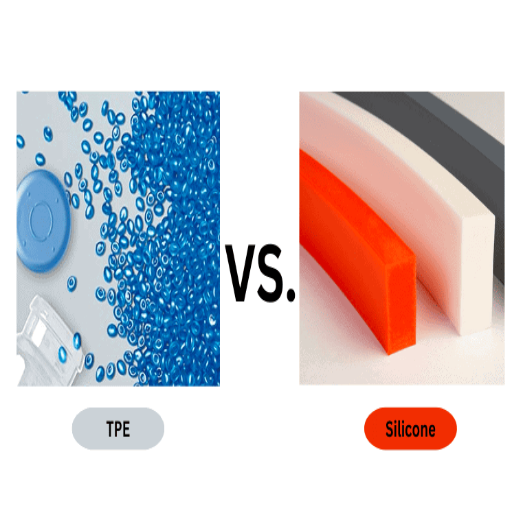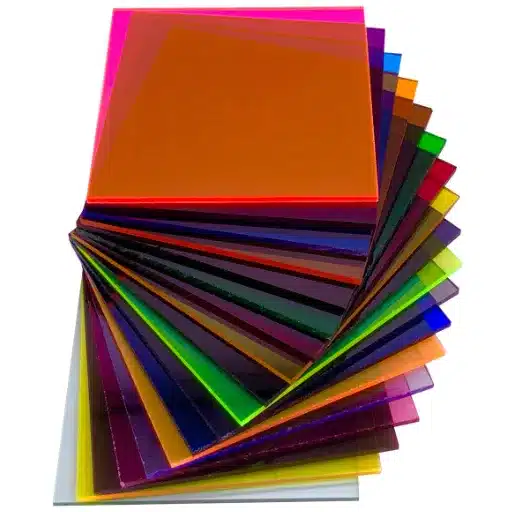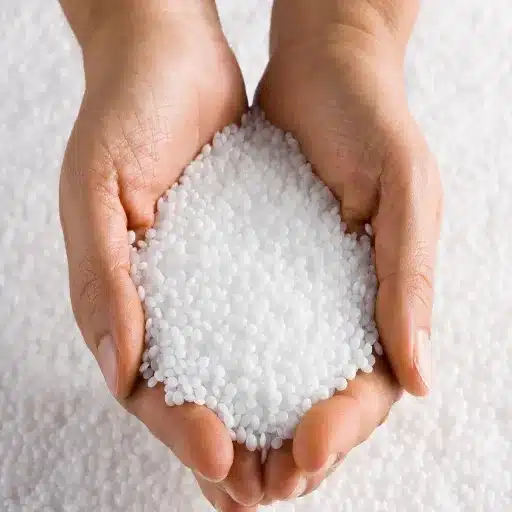When selecting materials for your products, recognizing the key differences between TPE (Thermoplastic Elastomer) and silicone is of utmost importance. Both are capable of being applied in a wide array of domains, from household items to medical devices, yet they are starkly contrasting in terms of properties, performance, and practicality.
Introduction to TPE and Silicone Materials
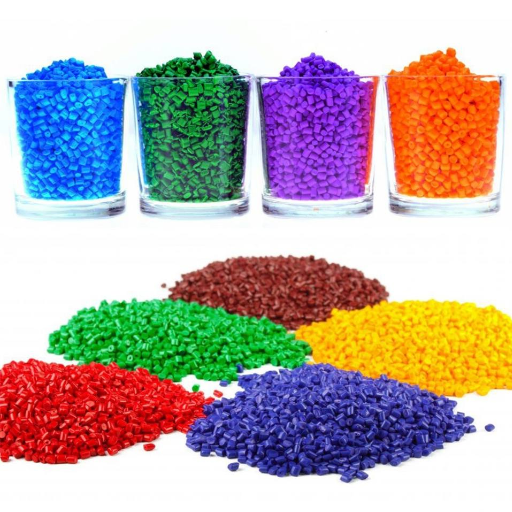
What is TPE (Thermoplastic Elastomer)?
A Thermoplastic Elastomer (TPE) is a unique material combining rubbery features with plastic properties. Its key characteristics include:
- Elasticity and processability – Can be melted, shaped, and cooled repeatedly
- Recyclability – Pellets can be reused, making it environmentally sustainable
- Versatility – Used in automotive, medical devices, and consumer goods
- Customization – Can vary in hardness, color, and texture
TPE materials offer excellent properties including high-impact strength, weather resistance, and good surface finish. They provide an ideal balance of elasticity and toughness for products such as soft-touch grips, seals, and flexible tubing.
What is Silicone?
Silicone is a versatile synthetic polymer comprising silicon, oxygen, carbon, and hydrogen. Key features include:
- Temperature resistance – Withstands -100°F (-73°C) to 500°F (260°C)
- Chemical inertness – Won’t break down in harsh chemical conditions
- Flexibility and water resistance – Perfect for sealants and medical applications
- Electrical insulation – Ideal for electronics manufacturing
- Biocompatibility – Safe for medical implants and food contact
Comprehensive Comparison: TPE vs Silicone
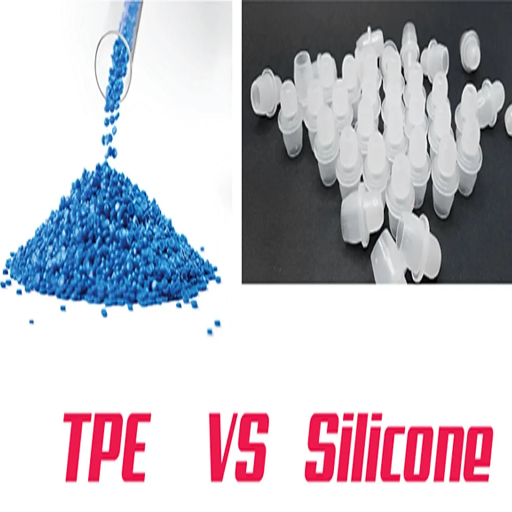
| Property | TPE | Silicone |
|---|---|---|
| Material Type | Thermoplastic (can be remelted) | Thermosetting polymer (cures permanently) |
| Temperature Range | Limited heat resistance | -100°F to 500°F (-73°C to 260°C) |
| Cost | Lower cost alternative | Higher initial cost |
| Recyclability | Highly recyclable | Limited recycling options |
| Customization | Highly customizable (hardness, color, texture) | Limited customization options |
| Chemical Resistance | Limited resistance to oils/solvents | Excellent chemical resistance |
| Durability | Good for short to medium-term use | Exceptional long-term durability |
TPE: Pros and Cons
✅ Advantages of TPE
- Flexibility and Softness: Mimics rubber texture and elasticity
- Processing Convenience: Uses conventional thermoplastic equipment
- Recyclability: Can be remolded and reused multiple times
- Customization: Tailored properties for specific applications
- Cost-Effective: Economical alternative to silicone
❌ Disadvantages of TPE
- Limited Heat Resistance: Not suitable for high-temperature applications
- Performance Variations: Properties depend on specific formulation
- Weather Sensitivity: May lose properties under extreme conditions
- Chemical Limitations: Degraded by certain oils and solvents
- Compression Set: May deform under prolonged static load
Silicone: Pros and Cons
✅ Advantages of Silicone
- High-Temperature Resistance: Withstands extreme heat conditions
- Excellent Flexibility: Maintains elasticity across temperature ranges
- Chemical Resistance: Resists acids, alkalis, and harsh chemicals
- Biocompatibility: FDA-approved for medical and food applications
- Longevity: Superior aging properties and UV resistance
❌ Disadvantages of Silicone
- Higher Cost: More expensive than TPE alternatives
- Tear Strength: Lower resistance to mechanical stress
- Compression Set: Can deform under prolonged static loads
- Environmental Impact: Limited recycling options
- Adhesion Challenges: Requires special treatments for bonding
Manufacturing Processes
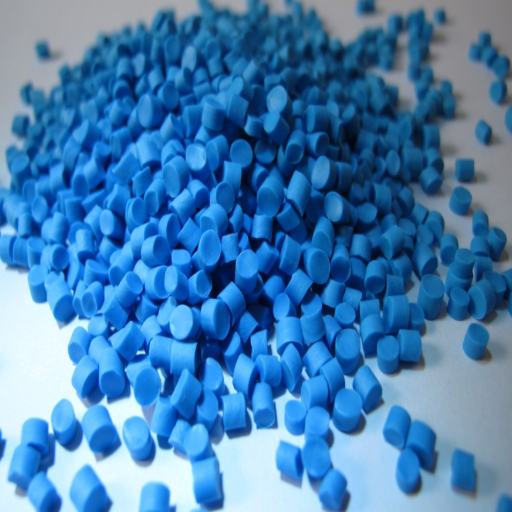
Injection Molding Considerations
TPE Injection Molding
- Temperature Range: 200°C to 250°C depending on formulation
- Cycle Time: Short cycles increase production efficiency
- Design Flexibility: Complex geometries and custom finishes possible
- Waste Reduction: Recyclable waste material from injection cycle
Silicone Injection Molding
- Material Type: Liquid Silicone Rubber (LSR) processing
- Temperature Range: 302°F to 482°F (150°C to 250°C)
- Precision: Low viscosity enables highly accurate molding
- Automation: Suitable for automated injection systems
Applications and Use Cases

TPE Applications
- Consumer goods (phone cases, grips)
- Automotive parts (seals, interior components)
- Medical devices (tubing, wearables)
- Sports equipment (shoe souls, grips)
- Industrial tools and adhesives
Silicone Applications
- Medical devices (prosthetics, implants)
- Electronics (insulation, sealants)
- Construction (sealants, adhesives)
- Automotive (gaskets, engine seals)
- Kitchen and baby products (bakeware, bottles)
Decision Matrix: When to Choose Each Material

| Application Requirement | Recommended Material | Reason |
|---|---|---|
| High-temperature resistance (>200°C) | Silicone | Superior thermal stability |
| Cost-sensitive projects | TPE | Lower material and processing costs |
| Medical/food contact applications | Silicone | FDA-approved biocompatibility |
| Recyclability requirements | TPE | Thermoplastic nature allows reprocessing |
| Chemical exposure environments | Silicone | Excellent chemical resistance |
| Short-term or disposable products | TPE | Cost-effective for limited lifespan items |
| Outdoor/UV exposure | Silicone | Superior weathering resistance |
Future Trends and Innovations
TPE Developments
- Sustainability Focus: Bio-based TPE materials from renewable sources
- Enhanced Recycling: Improved recycling processes and efficiency
- Performance Improvements: Better temperature and chemical resistance
- Green Manufacturing: Alignment with environmental manufacturing goals
Silicone Innovations
- Advanced Formulations: Enhanced properties for aerospace and healthcare
- 3D Printing Compatibility: Custom solutions across various sectors
- Specialized Applications: High-tech medical devices and electronics
- Manufacturing Integration: Improved processing technologies
Reference Sources
- TPE vs. Silicone: Which is Better?
Explains differences in compression set, durability, and applications of TPE and silicone. - All About the Differences Between TPE and Silicone
Highlights the melting point, tooling requirements, and material complexity of TPE compared to silicone. - How to Choose Between TPE and Silicone Rubber?
Discusses wear resistance, oil resistance, and high-temperature performance of both materials. - Manufacturing Products with Silicone vs TPEs
Covers hardness ranges, Shore A scale differences, and ideal applications for TPE and silicone. - Silicone vs TPE: What are the Differences?
Focuses on heat resistance, melting points, and other physical properties of the two materials. - View Plastic Pellets Manufacturers in China
Frequently Asked Questions
What are the main differences between TPE and silicone?
TPE is a thermoplastic that can be remelted and recycled, offering flexibility and cost-effectiveness. Silicone is a thermosetting polymer with superior heat resistance and chemical stability, making it ideal for demanding applications but at higher cost.
Which material is better for medical devices?
Silicone is generally preferred for medical devices due to its superior biocompatibility, sterilization resistance, and chemical stability. However, TPE can be used for certain medical-grade applications where these extreme properties aren’t required.
Is TPE or silicone more environmentally friendly?
TPE has better recyclability as a thermoplastic material, making it more aligned with circular economy principles. Silicone, while not easily recyclable, offers longer product lifecycles and produces minimal toxic byproducts.
Which material offers better value for money?
TPE offers better upfront value with lower material and processing costs. Silicone may provide better long-term value in applications requiring durability and performance under extreme conditions, despite higher initial costs.
Conclusion and Recommendations
Key Decision Factors
The choice between TPE and silicone depends on balancing several critical factors:
- Performance Requirements: Temperature range, chemical exposure, and durability needs
- Cost Considerations: Initial investment vs. long-term value
- Environmental Impact: Recyclability vs. product longevity
- Application Specifics: Regulatory requirements and safety standards
Final Recommendations
Choose TPE when: You need cost-effective, flexible materials for consumer goods, automotive parts, or applications where recyclability is important and extreme conditions aren’t expected.
Choose Silicone when: Your application demands high-temperature resistance, chemical stability, biocompatibility, or long-term durability, and the higher cost is justified by performance requirements.
By carefully evaluating these factors against your specific application requirements, you can make an informed decision that balances immediate needs with long-term objectives, ensuring optimal material selection for your project’s success.

